Gems of the southern Japanese seas - four new species of Edwardsianthus (Anthozoa, Actiniaria, Edwardsiidae) with redescriptions of two species
- PMID: 35002358
- PMCID: PMC8683394
- DOI: 10.3897/zookeys.1076.69025
Gems of the southern Japanese seas - four new species of Edwardsianthus (Anthozoa, Actiniaria, Edwardsiidae) with redescriptions of two species
Abstract
Edwardsianthus England, 1987 is a genus of Edwardsiidae, a family of burrowing and worm-like sea anemones characterized by lacking four mesenteries in the first cycle and containing only one type of nematocysts in nemathybomes. Until now, this genus has accommodated only two species since its establishment and has been recorded only from Indo-West Pacific regions. In this study, six species are reported from Japan: two are previously known species, E.pudicus (Klunzinger, 1877) and E.gilbertensis (Carlgren, 1931); four are new species, E.carbunculus sp. nov., E.sapphirus sp. nov., E.smaragdus sp. nov., and E.amethystus sp. nov. Based on these results, the diagnostic features of the genus are revised.
Keywords: Cnidaria; Kochi; Nansei Islands; Pacific Ocean; cnidae; nemathybomes; northernmost distribution limit; phylogeny; taxonomy.
Takato Izumi, Takuma Fujii.
Figures
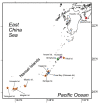

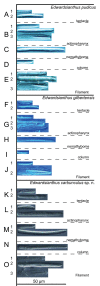
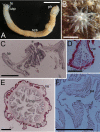
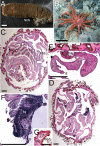
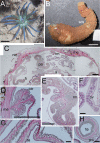
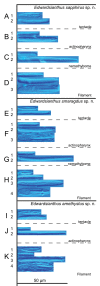
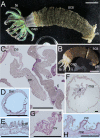
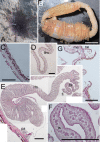
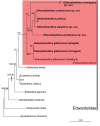
Similar articles
-
Two species of Edwardsia having gigantic nematocysts, E. aff. tuberculata br />and E. alternobomen sp. nov. (Cnidaria; Anthozoa; Actiniaria; Edwardsiidae) from Japan.Zootaxa. 2019 Aug 29;4661(3):zootaxa.4661.3.7. doi: 10.11646/zootaxa.4661.3.7. Zootaxa. 2019. PMID: 31716701
-
Description of three new species of Scolanthus (Cnidaria, Anthozoa, Actiniaria, Edwardsiidae): first records of the genus from Japan.Zookeys. 2018 Nov 1;(794):1-21. doi: 10.3897/zookeys.794.25243. eCollection 2018. Zookeys. 2018. PMID: 30416337 Free PMC article.
-
Sand Armored Edwardsiids: Two New Species of Paraedwardsia (Cnidaria: Anthozoa: Actiniaria: Edwardsiidae) from Japan.Zoolog Sci. 2023 Feb;40(1):70-78. doi: 10.2108/zs210052. Zoolog Sci. 2023. PMID: 36744712
-
Hydroids (Cnidaria, Hydrozoa) from Mauritanian Coral Mounds.Zootaxa. 2020 Nov 16;4878(3):zootaxa.4878.3.2. doi: 10.11646/zootaxa.4878.3.2. Zootaxa. 2020. PMID: 33311142
-
Review of the Acanthopagrus latus complex (Perciformes: Sparidae) with descriptions of three new species from the Indo-West Pacific Ocean.J Fish Biol. 2013 Jul;83(1):64-95. doi: 10.1111/jfb.12151. Epub 2013 Jun 17. J Fish Biol. 2013. PMID: 23808693 Review.
References
-
- Andres A. (1881) Prodromus neapolitanae actiniarum faunae addito generalis actiniarum bibliographiae catalogo. Mitteilungen aus der Zoologischen Station zu Neape 2: 305–371.
-
- Carlgren O. (1892) Beiträge zur Kenntnis der Edwardsien. Öfversigt af Kongliga Vetenskaps-Akademiens Förhandlingar 1892: 451–461.
-
- Carlgren O. (1921) Actiniaria Part I. Danish Ingolf-Expedition 5: 1–241.
-
- Carlgren O. (1931) Zur Kenntnis der Actiniaria Abasilaria. Arkiv für Zoologi 23: 1–48.
LinkOut - more resources
Full Text Sources
Research Materials
